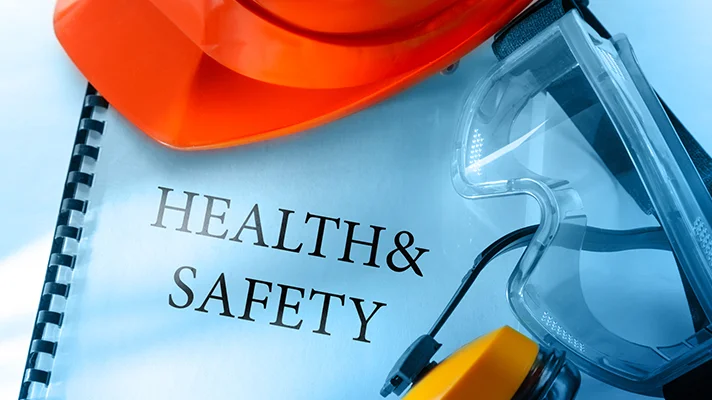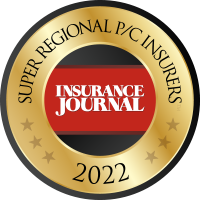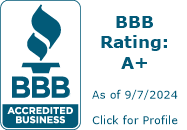Secure your future with Business Insurance!
Occupational Safety and Health Program

A comprehensive, informative occupational safety and health program should include 10 sections. Below are guidelines to develop a plan for your workplace.
Section 1: Employer Information
- Basic information about the company and the type of business you conduct.
- Company name.
- Primary business address, city, state, and ZIP.
- Contact information (phone numbers, email, social media sites).
- Type of business and brief description of primary types of occupations employed or processes used.
- All locations where you conduct operations.
- List by name and job position all persons you have assigned authority and responsibility to implement and maintain your safety program.
Section 2: Safety Coordinator
- Name of each person responsible for carrying out your safety program. There should be only one primary safety coordinator, but responsibilities for parts of the safety program should be assigned to as many people as necessary.
- Describe each person’s safety responsibilities and any duties related to them.
- Include a phone number, email, business mail addresses, and other relevant contact information for each person.
Section 3: Methods to Establish a Safe Workplace
- Discuss the methods you will use to identify safety and health hazards. Some methods you may want to consider are:
- Review of applicable OSHA (or state OSHA) safety requirements.
- Review of industry and general information on potential occupational safety and health problems specific to your operation.
- Evaluate all previous accidents, injuries, illnesses, and unusual events that have occurred.
- Study of Safety Data Sheets (SDS) to identify health and safety hazards associated with chemicals used in your workplaces.
- Scheduled inspections of general work areas and specific work locations.
- Evaluation of information provided by employees.
- List and describe each safety-training program and job-safety class that you provide for your employees.
- If you used Task Safety Analysis to develop information about safe procedures and identify safety problems, describe the process and where these records are kept.
- List where copies of your general safety rules or a policies and procedures manual can be found in the workplace.
Section 4: Safety Inspections and Correction of Hazards
- Discuss your procedure for scheduling and making safety inspections. Discuss each of the following items:
- The frequency for each type of safety inspection you plan to conduct.
- The position and person responsible for maintaining the safety procedures and the correction of hazards.
- The procedures the person making inspections will use.
- The method you will use to document safety inspections and corrective action taken on problems that are identified.
- The methods you use to assure that the responsible person has taken corrective action on problems found during inspections.
- The methods you will use to alert employees to uncorrected problems.
- List each checklist or inspection form used to document inspections and where these forms are available.
- List any other method or form you use to document inspection activities.
- List procedures for follow up to assure that the person responsible has corrected the problem. Monitor those procedures so the problem does not recur.
Section 5: Safety and Health Training Programs
- List when you plan to provide safety training, which should at least include the following times:
- When your program is first established, for all employees.
- Prior to starting work for all new employees.
- When employees receive a new job assignment.
- When you introduce new substances, processes, procedures or equipment.
- When you introduce new protective equipment or different work practices.
- When you find new or previously unrecognized hazards.
- As soon as possible for all supervisors to assure they know workplace hazards.
- Discuss your program for documenting training you provide your employees. Include information about the forms you use and where they are retained.
- Review when refresher training is given, the types of training, its frequency, who is responsible for the refresher training, and the related documentation you maintain.
- List and discuss all other types of safety and health training you provide, and the methods used. This may include video, discussion, lecture, hands-on, or computer-based training.
Section 6: Employee Safety Communications Program
- Describe your procedures for communication of safe working conditions, work practices, and required personal protective equipment. Include this information in all initial and refresher training.
- Discuss all methods of communications about safety and health matters with employees. Specify what methods you use, such as meetings, posters, payroll stuffers, etc.
- Describe how you solicit safety-related information from employees; for example, a safety suggestion program. Discuss your provisions for the anonymous submission of ideas for or concerns about safety and health matters.
- State how you inform employees that they may express any concern, comment, suggestion, or complaint about a safety-related matter without fear of reprisals or other job discrimination.
Section 7: Employee Compliance with Safety Rules
- Describe your procedures to ensure employees follow safe work rules.
- Describe how you inform employees that policies and procedures for safe work conditions and practices as well as required personal protective equipment are mandatory.
- Describe specifically how you will enforce mandatory policies and procedures, such as recognition programs for compliance or good safety records.
- Describe discipline for non-compliance and how the discipline will be applied.
Section 8: Accident and Illness Investigation Procedures
- Discuss your accident and injury/illness investigation program and procedures. State that the persons responsible should conduct the investigation as soon as possible after the accident, injury or illness.
- Include a procedure to investigate “near-miss” or unusual occurrences.
- List any forms you use and where they are available.
Section 9: Record Keeping Procedures
- List the forms you use to document accident and injury investigation and where these forms are maintained.
- Describe your record-keeping program for occupational injury and illness.
- List the period of retention of all written records.
- Discuss maintenance of OSHA forms.
Section 10: Review and Approval
At a minimum, senior management official should approve and sign the plan. You may have as many levels of approval and signatures as are necessary. You may want to consider having the responsible persons (safety coordinators) sign the plan.
Download This Article
Additional Safety Topics
Insurance Solutions for a Wide Range of Businesses
From contractors to coffee shops, we offer insurance designed for many types of businesses, including:
Specialty Insurance
Commercial Auto Insurance Workers' Compensation Insurance Manufacturing Insurance Insurance for WineriesConstruction and Contracting
General Contractor Insurance Carpenters Insurance Plumbing Insurance Excavator Insurance Electrician Insurance HVAC Business Insurance Lawn Care Business InsuranceRetail and Service
Retail Business Insurance Grocery Store Insurance Barber Insurance Pet Grooming Insurance Florist Insurance Bakery Insurance Photographer Insurance Beautician Insurance Coffee Shop Insurance Funeral Home Insurance Janitorial InsurancePolicyholders can request access to our On-Demand Video Training Service, which includes over 5,000 high-quality safety and human resource training videos. This service is provided at no cost to our policyholders.
View the Streamery Training Courses that are Available To get access to a Streamery course, contact your Hastings agent.

Monnit Remote Monitoring Solutions is offering Hastings policyholders a 20% discount on hardware and a 40% discount on software and connection services.
Monnit provides wireless IoT sensor solutions for remote monitoring across industries, offering real-time data tracking for temperature, humidity, motion, water detection, and more to help businesses optimize efficiency and prevent costly issues.
Secure your future with Business Insurance!
Hastings Insurance Company
404 E. Woodlawn Ave.
Hastings, MI 49058
Monday-Friday
8:00 a.m. - 4:30 p.m. (EST)
(800) 442-8277
Terms of Use and Privacy Statement© Hastings Insurance Company. All rights reserved.



